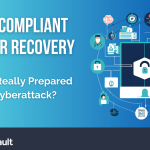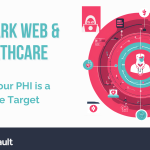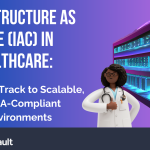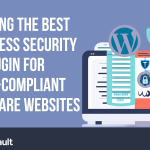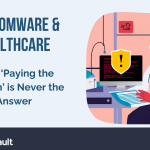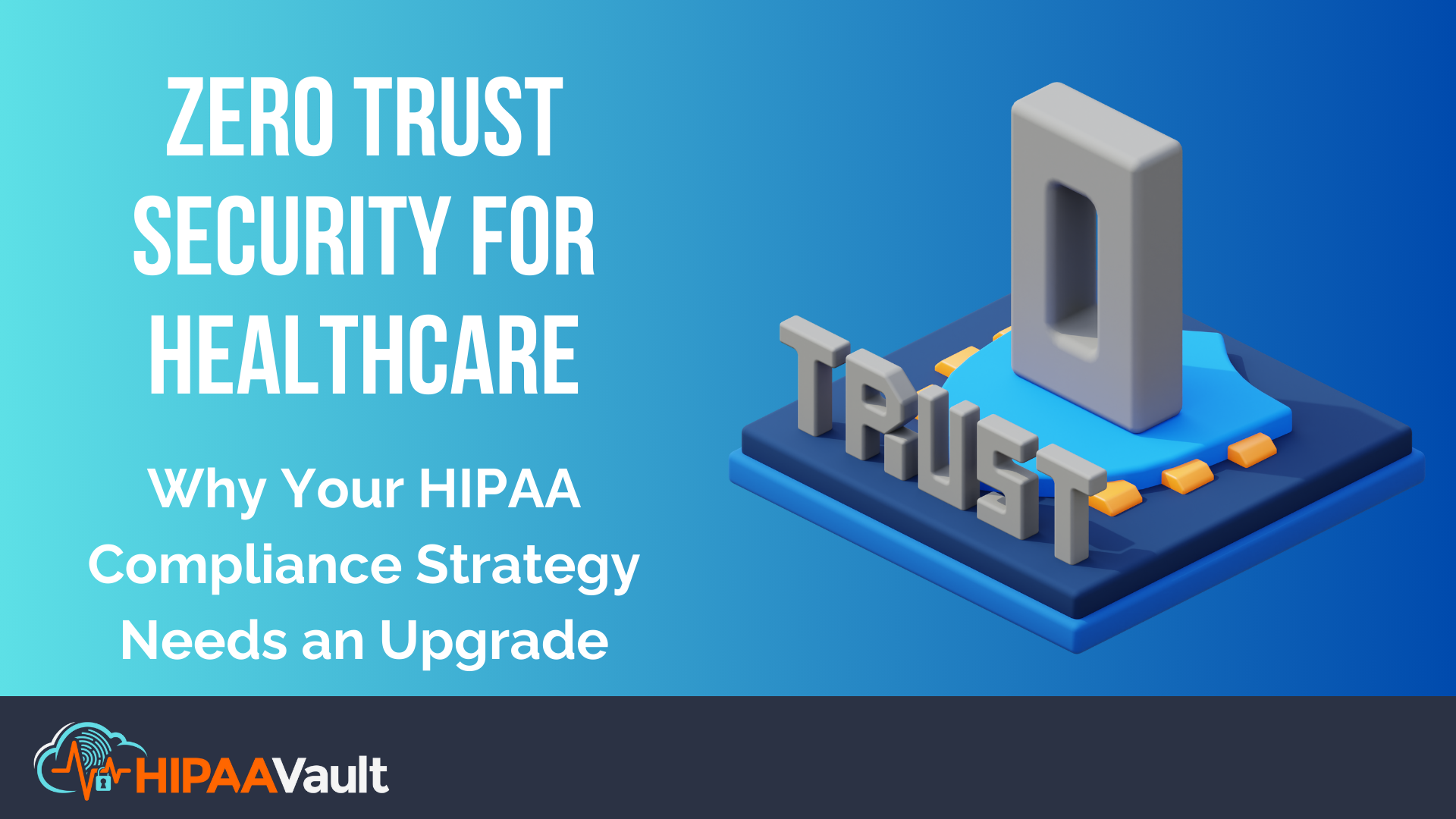
Zero Trust Security for Healthcare: Why Your HIPAA Compliance Strategy Needs an Upgrade
A Surge in Shadow Access: Why “Trusted” Users Pose the Greatest Risk to Healthcare Data
In today’s digital healthcare environment, the most damaging breaches often come from within.
Healthcare organizations increasingly rely on distributed networks, remote staff, and cloud-based tools to deliver care and manage sensitive data. While these advances offer flexibility and scalability, they also create a larger—and more vulnerable—attack surface.
Recent reports show that over 50% of healthcare data breaches now stem from insider threats or credential misuse. Whether caused by malicious intent, compromised accounts, or unintentional access errors, these internal risks can fly under the radar for months.
Enter Zero Trust Security — a strategic model designed to confront today’s realities head-on. It replaces assumptions of trust with continuous verification, helping healthcare organizations lock down sensitive systems, maintain HIPAA compliance, and gain greater visibility across their environments.
Let’s explore how the Zero Trust model works, why healthcare needs it now more than ever, and how HIPAA Vault helps implement it for lasting protection.
Why Traditional Perimeter-Based Security Falls Short
Historically, IT security operated under the assumption that anything within a trusted network boundary could be allowed access. Once authenticated at the edge, users, devices, and applications were granted wide-ranging access to internal systems.
This “castle-and-moat” model may have sufficed when healthcare systems were centralized and contained. But today, with remote care, IoT medical devices, third-party vendors, and cloud-native applications, the concept of a fixed perimeter has collapsed.
Perimeter-based security models tend to:
- Over-trust internal traffic
- Struggle with decentralized identities and devices
- Lack granular access controls and visibility
- Allow lateral movement after breach
In short, traditional security provides a false sense of protection in a cloud-first, mobile healthcare ecosystem.
For healthcare providers and payers, where Protected Health Information (PHI) is continuously flowing between endpoints, apps, and cloud environments, this model opens the door to HIPAA violations and data loss.
What is Zero Trust Security?
Zero Trust Security is a modern security architecture built on the foundational principle of “Never trust, always verify.” Instead of relying on the network’s location to determine trust, Zero Trust assumes every user, device, and request is a potential threat until verified.
This verification doesn’t happen just once—it occurs continuously. Every access request must meet strict authentication, authorization, and context-based validation.
The Core Pillars of the Zero Trust Model:
- Least Privilege Access
Users and applications receive only the permissions necessary for their roles—nothing more. This minimizes risk and limits the damage of compromised accounts. - Continuous Authentication and Authorization
Identity is verified repeatedly through methods like multi-factor authentication (MFA), behavioral analytics, and device posture assessments. - Micro-Segmentation and Network Isolation
Instead of one flat network, systems are segmented into smaller zones. This stops attackers from moving laterally if they breach one part of the environment. - Assume Breach Mentality
Zero Trust assumes attackers may already be inside the network and focuses on detection, rapid response, and containment. - Comprehensive Visibility and Logging
All user behavior, access patterns, and traffic flows are monitored and logged, providing an auditable trail for HIPAA compliance and incident response.
Unlike legacy models, the HIPAA Zero Trust model fits naturally within today’s cloud-based, hybrid healthcare environments, where access is dynamic and must be tightly controlled.
Why Healthcare Organizations Need Zero Trust
Healthcare continues to be one of the most targeted industries for cybercrime—and one of the most vulnerable.
Whether due to regulatory complexity, outdated infrastructure, or staffing limitations, many providers struggle to defend against evolving threats. Zero Trust offers a scalable, policy-based framework to mitigate those risks.
1. Cyber Threats Are Becoming More Sophisticated
Ransomware-as-a-Service, phishing, and credential stuffing attacks are now commonplace. Once attackers get a foothold they can move undetected across systems, encrypting files or exfiltrating data.
With Zero Trust, attackers can’t move freely, even if one system is breached, micro-segmentation and granular access controls contain the threat.
2. Insider Threats & Credential Misuse Are Rising
Not all data breaches come from external actors. Employees, contractors, or vendors with excessive access can accidentally (or deliberately) compromise PHI.
3. Remote Work & Cloud Usage Complicate Compliance
Telehealth, mobile apps, and cloud EHR platforms have blurred the lines between “internal” and “external” users. Traditional access controls are no longer effective.
Zero Trust aligns with HIPAA by enforcing identity verification and access audits—no matter where the user is located or what device they use.
4. HIPAA Compliance Demands Risk-Based Safeguards
The HIPAA Security Rule requires technical safeguards like access control, audit controls, integrity checks, and transmission security. Zero Trust enforces all of these by design, offering a HIPAA-ready security model that’s proactive and verifiable.
For organizations navigating overlapping regulations (HIPAA, HITECH, 42 CFR Part 2), Zero Trust provides the structure needed to reduce risk and demonstrate compliance.
How to Implement Zero Trust in Healthcare IT Environments
Implementing Zero Trust doesn’t have to be a disruptive, all-at-once shift. A phased approach allows healthcare organizations to evolve securely while meeting compliance goals.
Step 1: Map Assets and Users
Start by identifying critical assets (ePHI, EHR systems, APIs) and who needs access to them. This forms the foundation for access policies and segmentation.
Step 2: Enforce Least Privilege with Role-Based Access
Use Role-Based Access Control (RBAC) to ensure users have only what they need. Combine this with Just-In-Time (JIT) access for sensitive operations.
Step 3: Enable Strong Authentication
Implement Multi-Factor Authentication (MFA) across all systems. Integrate Identity and Access Management (IAM) tools that support single sign-on and contextual access policies.
Step 4: Segment Your Network
Divide systems and workloads by sensitivity level. Apply strict firewall rules and isolate administrative access points to reduce risk.
Step 5: Monitor, Detect, and Respond
Deploy endpoint detection and response (EDR), log aggregation, and SIEM solutions to detect abnormal behavior. Automate alerts and response protocols to act swiftly.
By embedding these practices into daily operations, healthcare IT teams can significantly reduce breach risk while improving regulatory posture.
How HIPAA Vault Supports Zero Trust Security for Healthcare
At HIPAA Vault, we specialize in designing and managing HIPAA-compliant cloud environments that embody Zero Trust principles from the ground up.
We help healthcare organizations transition smoothly into a Zero Trust architecture—without disrupting patient care or daily operations.
Here’s How We Help:
🔐 End-to-End Encryption & Access Controls
We secure data in transit and at rest using advanced encryption. Access is tightly controlled through IAM policies, MFA, and detailed audit logging.
🧠 Managed Security with Real-Time Threat Detection
Our security operations center (SOC) provides 24/7/365 monitoring with industry-leading tools and live expert response—ensuring threats are neutralized within 15 minutes.
🔄 Continuous Compliance Monitoring
We provide automated HIPAA compliance scans, log analysis, and support for NIST, HITRUST, and FedRAMP frameworks—ensuring your Zero Trust approach meets all regulatory benchmarks.
⚙️ Infrastructure as Code (IaC) for Agility
With IaC, we help automate and scale your secure cloud infrastructure. This approach enables repeatable, auditable deployments with reduced human error.
🚀 Scalable Cloud Hosting on Google Cloud Platform
As a Certified Google Technology Partner, HIPAA Vault delivers performance, scalability, and built-in compliance using FedRAMP-certified GCP environments.
From government systems like the Wyoming Eligibility System to healthcare innovators like robotic surgery firms, organizations trust us to design and operate secure, HIPAA-aligned systems that scale.
Explore our HIPAA Compliant Cloud Hosting Services to see how Zero Trust can elevate your security posture.
Conclusion: Zero Trust Is the Foundation of HIPAA-Compliant Security in 2024 and Beyond
As healthcare continues its digital transformation, data security cannot rely on outdated assumptions of trust. Today’s threats are more agile, more sophisticated, and often already inside your network.
Zero Trust Security offers a modern, risk-based approach that secures healthcare environments against internal and external threats—while supporting HIPAA compliance every step of the way.
At HIPAA Vault, we provide more than just hosting—we deliver secure-by-design cloud environments, proactive security monitoring, and expert compliance guidance.
Let us help you build a resilient, Zero Trust infrastructure that protects your patients, your data, and your reputation.
📞 Contact us at hipaavault.com or call 760-290-3460 to schedule a personalized consultation.

